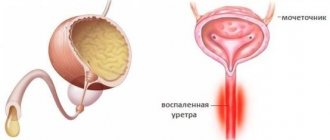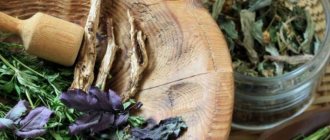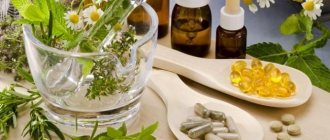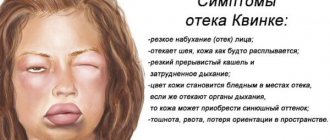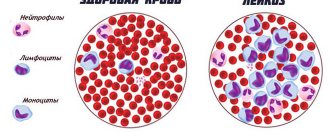Causes of pulmonary fibrosis
Pulmonary fibrosis is a disease that occurs as a result of the replacement of normal lung tissue with connective tissue.
The pathological mechanism is triggered by the active production of collagen, and over time, the amount of connective tissue exceeds the norm so much that the cells forming the organ are displaced and scar changes occur. The reverse process is impossible, since the connective tissue does not regenerate into normal tissue. Therapeutic therapy is not aimed at the complete recovery of a person, but at improving the quality of his life, which is very successfully implemented. Causes of pulmonary fibrosis :
- long-term, chronic infectious processes in the lungs;
- long-term allergies that are not subject to therapeutic treatment;
- radiation exposure to the body or a specific organ;
- prolonged inhalation of dust;
- granulomatous lung diseases.
In the initial stages, pulmonary fibrosis can be asymptomatic, and subsequently the disease makes itself known with eloquent symptoms:
- shortness of breath - at first, pathological changes occur during physical exertion, and as the disease progresses, it persists at rest;
- cough - dry or with a small amount of sputum;
- pallor, cyanosis (blueness) of the skin.
The worsening of pulmonary fibrosis entails an increase in symptoms extending beyond the respiratory system:
- change in the shape of the fingers - thickening of the fingers, convexity of the nail plate;
- development of heart failure and the so-called “pulmonary heart”: increased shortness of breath,
- heartbeat increases
- swelling forms in the legs, the neck veins swell and pulsate,
- chest pain develops;
Against the background of a modified lung structure, the risk of developing any infectious diseases with their inherent symptom complex increases.
Treatment with folk remedies
Wine tincture Aloe, which grows in almost every home, will come to your aid. Rinse five large sheets well under running water, dry and cut as small as possible, you can grate them. Add two large spoons of honey, grind until completely combined and add half a liter of young red wine. Stir everything thoroughly again - the product is ready for use. Treat yourself by drinking one spoon four times a day shortly before meals. Keep the medicine in a cool place between doses. Oatmeal broth For treatment you will need whole grains of oats, you can buy them in the store. Pour one liter of water into a glass of oat grains and leave to steep overnight. Place on the fire and cook until the amount of liquid is reduced by half. Strain, divide into three parts and drink the day before meals. Onion cure We will give you two recipes for onion medicine.
Recipe 1 . Peel and finely chop the onion, prepare enough sugar syrup to cover the chopped onion. Place on the stove and cook until the onion pieces become transparent. If you have honey, you can cook onions in it instead of sugar syrup - the remedy will be even more effective. Strain and drink one spoon up to ten times a day. Recipe 2 . Peel the onion, fill it whole with a glass of water and cook until the onion is ready. Pour out the broth and eat the onion in small portions throughout the day. If you boil onions in milk, the product will have an even greater healing effect. Dried fruits heal Raisins and dried apricots help activate metabolism and have a diuretic effect, which helps remove stagnant fluid from the lungs. Therefore, this recipe is worth adopting. There are two ways to treat with dried fruits. You can simply pour boiling water over them, wait until they soften and eat a few pieces before meals. The second method is a little more complicated. Bring one hundred grams of dried apricots or raisins, or a mixture of them, to a boil in a glass of water. After ten minutes, strain the broth and drink 2 tablespoons three times. And eat boiled dried fruits between decoctions.
Medicinal infusion Prepare equal parts oats, thyme, pikulnik and eucalyptus. After thoroughly mixing the mixture, separate one large spoon, pour it into a thermos and pour half a liter of boiling water. Let it sit overnight. In the morning, strain and drink half a glass. The infusion should be consumed hot and drunk throughout the day. Decoction
Prepare the ingredients for the decoction. Take equal parts of plantain leaves, coltsfoot and pine buds. Mix thoroughly and bring four spoons to a boil in one glass of water. After five minutes, remove and strain. Divide the resulting decoction into three equal parts and drink throughout the day. Healing mixture Prepare beets, carrots and horseradish by thoroughly washing and drying them. Now squeeze one glass of juice from the beets and carrots, and grate the horseradish so that you get one glass of horseradish mass. Grind, passing through a meat grinder, walnuts, raisins and lemon with a crust - you also need one glass of the finished mass. Now transfer everything and pour into one bowl, preferably glass, add a glass of honey and mix very thoroughly. The mixture is ready for use. For the first three days, eat a teaspoon three times, then a tablespoon an hour before meals or two after meals. Treat for two months. After three weeks you can be treated again. Radish with honey
This is not the recipe we are used to, where we cut off the top of the radish, scoop out the pulp, add honey and wait for the juice to appear. This recipe can be treated immediately after preparation. Wash and dry a few black radish roots and start squeezing the juice until you get a glass full. Add one hundred grams of liquid honey to the radish juice. Drink two spoons four times a day before meals. The last dose is before bedtime.
Nettle tincture
Pour two hundred grams of fresh nettle or one hundred dry nettles into a bottle of vodka. There is no need to close the lid; cover the top with a piece of gauze. Place it on the window for one day. Place in a dark closet for six days. Strain and squeeze the nettle into a tincture. Take one spoon of nettle tincture before breakfast and lunch. And one more spoon before bed. Sage in milk Place a saucepan with a glass of milk on the fire. Add one tablespoon of sage to the milk and bring to a boil. Cool and strain. Bring the milk to a boil again. Drink hot before bed. Honey massage Every other day it is useful to massage the upper back with honey. Apply honey to your back and rub it in until your palms stick to your back. Aromatic decoction An infusion of oregano and tricolor violet taken in a spoonful will help the lungs work and cleanse them of harmful substances. Pour two cups of boiling water over the aromatic herbs and leave for one hour. Drink like tea, but without added sugar. Can be enjoyed with dried fruits. Healing collection An infusion of cumin seeds, fennel seeds and spring adonis - one part and two parts of horsetail - will replenish the oxygen deficiency in the lungs and increase blood circulation in them. Mix everything very thoroughly and take one spoon of the mixture, pour in a glass of boiling water, strain after thirty minutes, divide into three parts and drink in a day. Agave on Cahors
Agave on Cahors
Finely chop the leaves of the houseplant agave and fill a half-liter jar with them. Add fifty milliliters of liquid honey to the agave and top up with Cahors. Place in a dark place to infuse for ten days. Then strain, squeeze the infused agave leaves very well and take the medicinal infusion three times a day, one spoonful at a time. Milk potion Bring a glass of milk to a boil, add to it while it is hot, a spoonful of pork fat and the same amount of honey. Mix everything thoroughly and wait until it cools. Beat fresh eggs and add to the milk mixture. Drink it all in one go. You need to make and drink the milk medicine three times a day. “Calciumite” This recipe is very old. They treated patients with hemoptysis, relieved fever and gave them for coughing. Prepare the ingredients: six fresh chicken eggs, ten lemons, one glass of cognac without aromatic additives and five hundred ml of honey. Without breaking the eggs, place them in a glass jar, squeeze the juice from the lemons and pour it over the eggs. Cover the jar with gauze and put it in a dark place. Check every day, you need to wait until the shell dissolves under the influence of citric acid. Carefully melt the honey until liquid, combine with the lemon-egg solution, pour into an opaque glass container and store in the refrigerator. You should drink calciumite three times a day, one dessert spoon. Rosehip infusion
Make rosehip infusion your daily drink. Brew a few berries with boiling water and let this healing infusion always be on your table. Drink little by little throughout the day. Eat beets every day, adding them to salads, and making soups with beets.
How to treat pulmonary fibrosis?
Treatment of pulmonary fibrosis is determined by a qualified specialist depending on the characteristics of the disease in a particular person. Glucocorticoids, cytostatics and immunosuppressants are used for severe forms of fibrosis. Lungs affected by fibrosis often become a favorable environment for the attachment of pathogenic microflora and the development of inflammation. To prevent this, antibacterial drugs are prescribed; oxygen inhalation and cardiac glycosides will be useful. For debilitating cough and shortness of breath, bronchodilators are prescribed.
Drug treatment of pulmonary fibrosis should be supported by therapeutic breathing exercises, while large physical activities are contraindicated for the patient. It is also necessary to exclude exposure to fibrosis-provoking factors on the body.
No specific therapy for fibrosis has been developed; a pathological process of this kind is still considered irreversible. The doctor is faced with the task of preventing its progression, the addition of a secondary infection and maximizing the patient’s quality of life. To achieve these goals, the following therapeutic techniques are used:
- oxygen therapy - oxygen inhalation using special devices;
- breathing exercises;
- surgical intervention is permissible in case of total fibrosis, represented by transplantation techniques.
Physiotherapy
Physiotherapy in this case consists of oxygen therapy and breathing exercises. They improve blood flow, gas exchange, and increase vital capacity (vital capacity of the lungs).
Breathing exercises are an auxiliary type of treatment. In addition to this, cycling, morning jogging, and brisk walking are also recommended. Fibrosis (of the lungs) doubles the load on the intercostal muscles and the remaining parenchyma, which causes rapid fatigue of the patient.
Therapeutic breathing exercises for pulmonary fibrosis are aimed at minimizing tension and fatigue. In addition, exercise helps clear phlegm.
Breathing exercises consist of sequential alternation of abdominal, pulmonary and full breathing:
- While standing, inhale and exhale, but only with the stomach. The chest is held for control by the hand and is motionless. On inhalation - deep retraction of the abdomen.
- Only the chest works, the stomach is motionless. You need to breathe deeply and smoothly.
- Full breath. This is the final exercise. Inhalation begins with protrusion of the abdomen; With maximum protrusion, you need to take a few more breaths until failure. Then a smooth exhalation is made through the chest.
Repeat each exercise 5-6 times daily. Gymnastics prevents congestion in the lungs.
To normalize gas exchange, exhale with resistance. Inhale through the nose, exhale through the mouth into a glass of water through a straw - repeat 10 times a day.
To remove pulmonary mucus, squeezing is done while lying down. While lying down, inhale, and as you exhale, press your knees to your chest and squeeze them. Cough when finishing the exercise.
What diseases can it be associated with?
The pathological process in the lungs, over time leading to the replacement of normal connective tissue, turns out to be adjacent or subsequent to the following conditions:
- alveolitis is a pathological process in the interstitial tissue of the lungs, often a precursor to progressive fibrosis; usually manifests itself as increasing respiratory failure;
- asbestosis is a pathological condition belonging to the group of pneumoconiosis, developing as a result of prolonged contact with asbestos dust;
- pulmonary granulomatosis;
- pulmonary mycoses - fungal infections of the lung tissue, occurring mainly in patients with sharply reduced protective reactions of the body
- pneumoconiosis - lung diseases that develop as a result of human inhalation of dust;
- diabetes;
- silicosis is a pathological condition belonging to the group of pneumoconiosis, developing as a result of prolonged contact with dust particles containing silicates;
- lung injuries;
- Pulmonary tuberculosis is an infectious disease caused by several types of acid-fast mycobacteria, which most often infect the lungs.
Complications of pulmonary fibrosis with inadequate or untimely treatment include:
- chronic respiratory failure;
- pulmonary hypertension;
- chronic pulmonary heart disease;
- the addition of a secondary infection (with the development of pneumonia).
Methods of treating the disease
A complete cure for the disease is impossible for the reason that the connective tissue cannot transform back into normal tissue. It's getting too much. Despite modern medical advances, fibrosis is considered an irreversible process. Drug therapy and folk remedies for pulmonary fibrosis are aimed at stopping the growth of pathological formations and improving the patient’s quality of life.
Since lungs with fibrotic lesions become more vulnerable to infections and inflammation, courses of antibacterial agents are prescribed. If you suffer from shortness of breath and coughing attacks, your doctor may recommend bronchodilators. In severe fibrosis, glucocorticoids and drugs are used that inhibit the body's reaction to foreign tissue.
Treatment of the disease with medications must be prescribed by a doctor and supervised by him. Patients should not engage in professional sports or deal with heavy loads. But light physical exercise will only be beneficial, since it will help saturate the body with oxygen. You will have to refuse to work with unfavorable external factors (dust, dampness, chemical fumes).
To make life easier and relieve the main symptoms, you need to follow these recommendations:
- undergo oxygen therapy
- do breathing exercises regularly
- light physical activity
- exclusion of provoking factors
- proper nutrition
- sufficient rest time
In severe cases of the disease, surgical intervention in the form of a lung transplant is indicated. This measure is justified in case of damage to the entire organ.
To prevent the situation from worsening, you need to regularly see a specialist. In addition, maintaining a healthy lifestyle, a balanced work and rest schedule should be a prerequisite.
What drugs are used to treat pulmonary fibrosis?
- Azathioprine - 1.5-2 mg/kg per day in 3-4 doses; according to doctor's indications, the daily dose can be increased to 200-250 mg in 2-4 doses; The duration of the course is set individually;
- Prednisolone - 0.5-1.2 g/day, followed by a dose reduction to 0.3-0.15-0.1 g/day;
- Cyclophosphamide - the dosage and duration of the course are set individually, depending on the indications and stage of the disease, the state of the hematopoietic system, etc.
Treatment of pulmonary fibrosis during pregnancy
Treatment of pulmonary fibrosis must be carried out under the supervision of a competent specialist who will assess the benefits of treatment for the mother and the risks of such therapy for the fetus. Therapeutic prescriptions are carried out depending on the degree of fibrosis and the characteristics of its course. If the disease does not seriously affect the woman’s health and does not threaten to become complicated during pregnancy or childbirth, treatment can be postponed until the postpartum period. However, the presence of such a diagnosis determines the need to be under medical supervision in order to react in time to a deterioration in health.
Uses of rosemary
Rosemary has also shown excellent results in the fight against pulmonary fibrosis. It not only cleanses the human body of all kinds of waste and toxins, but also helps improve blood circulation in the lungs and bronchi. In general, the use of this remedy promotes the restoration of lung tissue. Sprigs of finely chopped rosemary must be mixed with water in equal proportions, and then simmered in the oven for several hours.
As soon as the time is right, turn off the oven, cool the rosemary and add the same amount of liquid honey to the medicine. This product is mixed well and placed in the refrigerator. Use the drug only once a day in the morning.
Treatment of pulmonary fibrosis with folk remedies can be very effective.
Which doctors should you contact if you have pulmonary fibrosis?
- Pulmonologist
Diagnosis of pulmonary fibrosis is based on the analysis of clinical criteria:
- progressive shortness of breath,
- cough,
- general weakness,
- weight loss.
It is advisable to conduct an anamnesis of the patient’s life to obtain information about previous and existing diseases:
- pneumonia,
- tuberculosis (an infectious disease caused by Mycobacterium tuberculosis),
- systemic scleroderma,
- rheumatoid arthritis,
- harmful professional activity, for example, in production.
Specific diagnostics are represented by the following procedures:
- auscultation (listening) and percussion (tapping) of the lungs;
- spirography (study of lung volume and respiratory function);
- chest x-ray (can detect changes in the lungs);
- computed tomography (CT) and magnetic resonance imaging (MRI) - allow the most detailed determination of the nature of changes in the lungs;
- lung biopsy - examination of a piece of lung tissue obtained during endoscopic examination of the bronchi (insertion of a bronchoscope into the airways) or during surgery; allows you to detect scar tissue in the lung at a microscopic level.
Treatment of other diseases starting with the letter - f
| Treatment of pharyngitis |
| Treatment of breast fibroadenoma |
| Treatment of liver fibrosis |
| Treatment of uterine fibroids |
| Treatment of phimosis |
| Treatment of folliculitis |
| Treatment of yaws |
| Treatment of furunculosis |
The information is for educational purposes only. Do not self-medicate; For all questions regarding the definition of the disease and methods of its treatment, consult your doctor. EUROLAB is not responsible for the consequences caused by the use of information posted on the portal.


